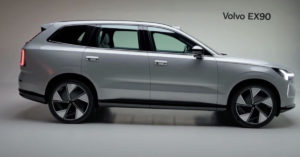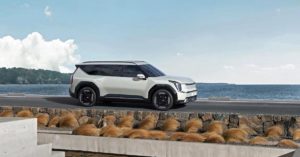Brief History of Electric Vehicles
Electric vehicles have existed for over a century, with the first electric car being invented in the late 1800s.
These vehicles were popular in the early 1900s and considered a cleaner, more efficient alternative to gasoline-powered ones.
However, the invention of the internal combustion engine led to declining electric vehicle popularity.
In recent years, there has been a resurgence of interest in electric vehicles due to their environmental benefits and technological advancements.
The Tesla Roadster, introduced in 2008, helped to bring attention back to electric cars with its sleek design and impressive performance.
Many different types of electric vehicles are available, including hybrids and fully-electric cars.
The popularity of these vehicles is only expected to grow as more people become aware of their benefits and as technology continues to improve.
Table of Contents
Growing Popularity of Electric Vehicles
The popularity of electric vehicles has been steadily increasing over the past few years due to several factors.
One major factor is increased awareness about environmental issues and a desire for cleaner transportation options.
Electric cars emitting zero emissions while driving (as opposed to traditional gasoline-powered cars) are an excellent way for individuals to reduce their carbon footprint.
Another factor driving growth is improvements in battery technology that have resulted in longer ranges for electric vehicles before needing recharging.
In addition, home charging stations are becoming increasingly common, which makes it easier for drivers who use their cars primarily within a local area.
According to the International Energy Agency’s (IEA)’ Global EV Outlook 2021′ report, there were 10 million electric cars on the world’s roads at the end of 2020.
Despite the pandemic-related worldwide downturn in car sales, electric car registrations increased by 41% in 2020. Europe overtook China as the world’s largest electric vehicle (EV) market for the first time.
More automakers are investing heavily into developing new models that cater specifically to EV buyers – such as hybrid SUVs or electric suv – which has helped increase demand from consumers who desire larger vehicles without compromising environmental friendliness.
All these factors combined make it clear that we’re headed towards an increasingly electrified future, with the adoption of electric vehicles quickly accelerating.
Advancements in Electric Vehicle Technology
Batteries: Longer Range and Faster Charging Times
One of the major concerns for people considering electric vehicles is the range on a single charge.
However, there have been significant advancements in battery technology that have increased the range of electric cars.
New lithium-ion batteries allow many electric cars to travel over 200 miles on a single charge. This means they are now comparable to traditional gasoline-powered cars in the range.
Not only have batteries improved in range, but they have also become more efficient regarding charging times.
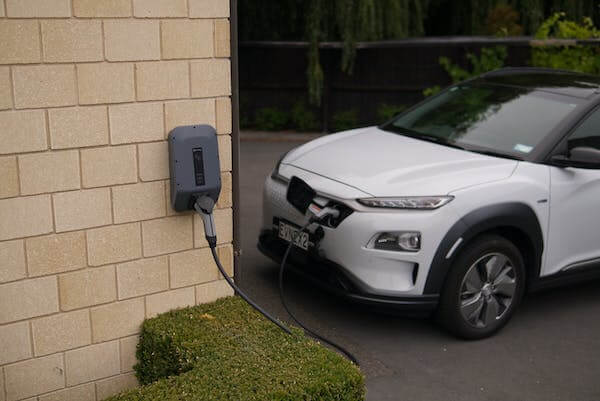
A level 2 home charger can now fully charge an electric car battery in just a few hours, making it much more convenient for people who want to own an electric car.
Autonomous Driving Technology
Autonomous driving technology is another area with a lot of development. Many automakers are investing heavily in this technology and are working towards creating fully self-driving vehicles.
While these vehicles are not yet available to the general public, many current models already feature some level of autonomy, such as adaptive cruise control and lane-keeping assistance.
Self-driving cars could revolutionize transportation by reducing accidents caused by human error and improving traffic flow.
Also, self-driving cars could be paired with ride-sharing services, making owning a car less necessary.
Lightweight Materials for Improved Efficiency
Automakers are also exploring new materials that can improve the efficiency of electric vehicles.
Lightweight materials like carbon fiber and aluminum can significantly reduce the weight of an electric car without sacrificing safety or performance.
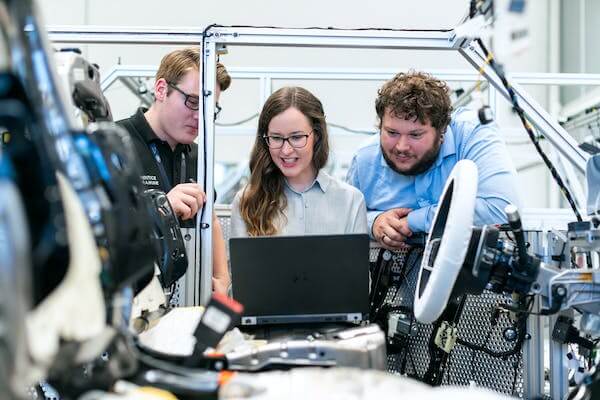
In addition to reducing weight, these materials can improve aerodynamics, enhancing efficiency and increasing range on a single charge.
Technological advancements continue to make electric vehicles more practical for everyday use.
With longer ranges, faster charging times, and improvements in autonomous driving technology and efficiency, it’s clear that electric cars will play an essential role in the future of transportation.
Infrastructure for Electric VehiclesCharging Stations: Public and Private
“Where can I charge my electric car?” is a common question among new electric vehicle owners.
Thankfully, public charging stations are becoming increasingly commonplace, with over 25,000 in the United States alone.
Charging stations vary by location, with some being free to use while others require payment.
Some public charging stations allow drivers to charge for a certain amount of time, while others allow drivers to fill up their battery to 80% or 100%.
It’s worth noting that charging rates can vary based on the car model and type of charger.
Private charging options also exist, such as installing a home charging station.
This option provides convenience for those with a dedicated parking spot at their residence or work. Level 2 home chargers are the most common, providing faster charging times than standard wall outlets.
Battery Swapping Stations
In addition to traditional charging stations, battery swapping stations are being explored as another infrastructure option for electric vehicles.
Instead of plugging in and waiting for your car to charge, battery swapping offers a quick swap out of your depleted battery with a fully charged one.
Although this technology is still in its early stages and not yet widely available, it has the potential to offer fast and convenient recharging options.
Integration with Renewable Energy Sources
Integrating renewable energy sources into electric vehicle infrastructure is becoming more critical as we move towards cleaner energy sources.
Solar-powered EV chargers are already available in some locations, allowing EVs to be charged using clean energy from the sun rather than relying on traditional electricity grids.
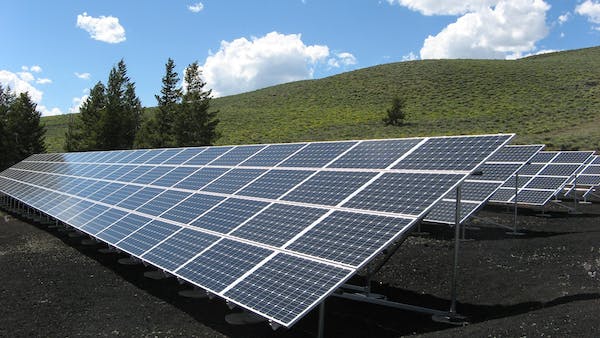
Additionally, EV batteries have the potential to be used as storage units for excess solar power generated during peak times when demand is low.
Electric vehicle infrastructure includes public and private charging options such as home charging stations, battery swapping stations, and integration with renewable energy.
As electric vehicles become more popular, we’ll continue to see advancements in infrastructure options that will make owning and charging an electric vehicle even more convenient.
The Green Revolution: Environmental Benefits of Electric Vehicles
Reduction in Greenhouse Gas Emissions
One of the most significant benefits of electric vehicles (EVs) is their reduced carbon footprint compared to traditional gasoline-powered cars.
Gasoline engines emit harmful greenhouse gases such as carbon dioxide, methane, and nitrous oxide, contributing to climate change.

In contrast, electric motors have no exhaust emissions and are much more energy-efficient than internal combustion engines.
According to the Union of Concerned Scientists, driving an EV produces significantly less greenhouse gas emissions than the most fuel-efficient hybrid SUV or electric SUV.
Additionally, when paired with renewable energy sources like solar or wind power for charging, EVs can be completely emissions-free.
Improved Air Quality in Cities
In addition to reducing greenhouse gas emissions globally, EVs improve air quality in cities.
Traditional cars release harmful pollutants into the air, leading to respiratory problems and other health issues.
In contrast, EVs produce zero tailpipe emissions and significantly reduce the amount of harmful pollutants like nitrogen oxides and particulate matter in urban environments.
A study by the European Environment Agency found that widespread adoption of electric vehicles could reduce urban air pollution levels by up to 30%.
This means cleaner air for everyone who lives or works in a city environment.
The Future Looks Bright
As we move towards a greener future, it’s clear that electric vehicles have a critical role in reducing our carbon footprint and improving air quality.
While challenges are ahead – from limited range compared to traditional gasoline-powered cars to high initial costs – continued advancements in technology and infrastructure will lead to increased adoption and benefits for both individuals and society.
So if you’re considering buying an EV, consider investing in a level 2 home charger or home charging station, which will allow you to charge your vehicle quickly and easily at home.
With electric vehicles’ environmental and economic benefits, there’s never been a better time to go electric.
Economic Impact of Electric Vehicles
Job Creation in the Manufacturing and Maintenance Industries
One of the most significant benefits of electric vehicles is the potential for job creation in the manufacturing and maintenance industries.
With the rise of electric vehicles, there will be a growing demand for engineers, technicians, and other skilled workers to design, build, and maintain these vehicles.
As more automakers invest in electric vehicle technology, they will likely need to expand their production capacity.
This means more factory jobs producing batteries, motors, and other components.
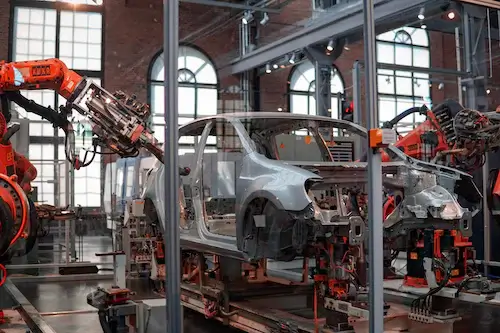
Additionally, as more people switch to electric vehicles, there will be a growing need for maintenance technicians who can service these vehicles.
The transition to electric vehicles could create many new jobs across multiple industries.
This could have a significant positive impact on local economies and help drive innovation in related fields.
Cost Savings for Consumers on Fuel and Maintenance
Another significant advantage of electric vehicles is their cost savings over traditional gasoline-powered cars.
While electric cars may have a higher sticker price initially than conventional cars (although this is changing), they are significantly cheaper to run over time.
For example, one study found that switching from a gas-powered car to an all-electric vehicle could save drivers an average of $800 per year on fuel costs alone.
Additionally, since electric cars have fewer moving parts than conventional cars (no oil changes or transmission repairs), maintenance costs are also typically lower.

Furthermore, with government incentives available at both state and federal levels (such as tax credits), it’s becoming more accessible for consumers to switch to an EV without breaking the bank.
You get all sorts of advantages from driving an EV – like eliminating trips to your local gas station or being able to charge your level 2 home charger overnight – but you can also save money on fuel and maintenance costs over time.
And as more people choose electric vehicles, the associated manufacturing and maintenance industries will grow, which can create new job opportunities across the country.
Challenges Facing the Future of Electric Vehicles
Limited Range Compared to Traditional Gasoline-Powered Vehicles
One of the biggest challenges facing electric vehicles is their limited range compared to traditional gasoline-powered vehicles.
While many newer electric models boast ranges of 200 miles or more on a single charge, this is still significantly less than what a full tank of gasoline can provide.
This can deter those needing to travel long distances frequently, as they may need more time to rely solely on an electric vehicle.

However, advancements in battery technology are quickly improving the range of electric cars.
For example, the latest Tesla Model S Long Range Plus boasts a range of up to 402 miles on a single charge – nearly double what was previously available just a few years ago.
Additionally, the increasing availability and ease of use of public and home charging stations can alleviate concerns about range anxiety for many drivers.
High Initial Cost for Electric Vehicles
Another challenge facing the future of electric vehicles is their high initial cost compared to traditional gasoline-powered vehicles.
At the same time, this gap is slowly narrowing as production costs decrease and demand increases; many consumers are still hesitant to make the switch due to sticker shock.
However, it’s essential to consider the long-term cost savings of owning an electric vehicle.
EVs require less maintenance and have lower fuel costs than their gas-guzzling counterparts.
Additionally, government incentives and tax credits are often available for purchasing an EV that can help offset some of the initial cost.
Lack of Standardization in Charging Infrastructure
One major challenge facing the future of electric vehicles is the need for more standardization in charging infrastructure.
Unlike filling up at a gas station where every pump works with every car, different types and levels of chargers work with different models and brands of EVs.
This can be frustrating for EV owners, who may need to carefully plan their routes to ensure they can access compatible chargers.
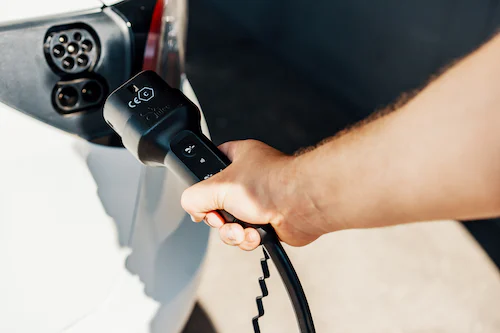
However, efforts are being made to increase standardization and compatibility across the industry.
For example, many newer models of electric SUVs and hybrid SUVs come standard with a level 2 home charger that can be used with a variety of different EVs.
Companies like Tesla have invested heavily in their proprietary charging networks that offer fast and reliable vehicle charging options.
While we’ve discussed the many benefits and advancements of electric vehicles, it’s also important to acknowledge the challenges of any new technology.
One of these challenges is the limited range compared to traditional gasoline-powered vehicles, which we’ve touched on above.
However, another challenge that isn’t often discussed is the potential issues that can arise when the battery pack – the equivalent of the engine in an electric vehicle – needs to be replaced.
Like traditional engines, replacing a battery pack in an electric vehicle comes with its own potential issues and considerations.
If you want to learn more about this topic, you can read our Common Problems After Engine Replacement article.
While focusing on traditional engines, this article provides valuable insights into the complexities of replacing a major component in a vehicle.
The Future Looks Bright for Electric Vehicles
Revolutionizing Transportation and Society
The future of electric vehicles is looking bright. With the continued advancements in technology and infrastructure, EVs will continue to offer a clean, efficient, and sustainable transportation option.
Greater adoption of EVs could reduce our reliance on fossil fuels, decrease greenhouse gas emissions, and improve air quality in our cities.
In addition to environmental benefits, the economic impact of electric vehicles must be considered.
The manufacturing and maintenance industries will see job creation as demand for these vehicles increases.
Furthermore, EVs offer cost savings for consumers on fuel and maintenance compared to traditional gasoline-powered cars.
Overall, electric vehicles have the potential to revolutionize both transportation and society as a whole.
As we move towards a more sustainable future, it’s clear that EVs will play an essential role in achieving that goal.
As we look towards the future, one cannot ignore the role of advanced technologies like air suspension in enhancing the driving experience, especially in SUVs.
Learn more about how air suspension is revolutionizing SUVs in our latest article
Charging Made Easy
One key factor that has limited the adoption of electric vehicles in the past has been concerns over charging infrastructure.
However, with the development of more public charging stations and the ability for level 2 home chargers or home charging stations now readily available, range anxiety is becoming less of an issue for drivers.
Additionally, battery-swapping stations are another promising solution for those who may not have access to a charging station at home or work.
The IEA report states over 25,000 charging stations across the United States alone.
It also mentions the potential of battery swapping stations and integrating renewable energy sources into electric vehicle infrastructure.
Integrating renewable energy sources further reduces carbon emissions from powering these cars. We can expect even better solutions for charging electric vehicles daily as technology advances.
The Rise of Electric SUVs
Electric SUVs are rising as automakers recognize consumer demand for larger vehicle options while maintaining sustainability standards.
Hybrid SUVs have been available since 2005, but fully-electric models are emerging into markets, such as the Audi E-Tron, Kia EV9, or Tesla Model X, which offers features such as autopilot and a 0 to 60 mph time of just over 2 seconds.
As the market for electric SUVs continues to grow and diversify, it’s clear that electric vehicles are no longer just for small cars or niche markets.
These larger EV options allow more people to transition away from gasoline-powered cars and towards a sustainable future.
The Future is Electric: New Players and Trends
The Rise of Tech Companies in the EV Market
In an exciting twist, tech giants are making their mark in the EV market. Apple, for instance, reportedly invests around $1 billion each year into its rumored electric vehicle,
Titan, which is expected to arrive in 2026. The Apple car is anticipated to be capable of autonomous highway travel and built around a powerful onboard computer.
Similarly, Sony has partnered with Honda on a new EV brand called Afeela, promising a similar product for 2026.
This trend of tech companies entering the automotive market could revolutionize the industry.
The Emergence of High-Performance Electric Vehicles
High-performance electric vehicles are no longer a distant dream.
Several automakers are planning to launch electric vehicles that pack a punch. For instance, Alfa Romeo plans to revamp its gas-powered Giulia with an electric powertrain for 2025, which is expected to produce up to 1000 horsepower.
BMW is also planning to launch the i5 M, a high-performance electric vehicle with 1136 horsepower, by 2026.
The Transition of Luxury Brands to Electric
Luxury brands are just a little behind in the race to electrification.
Bentley plans to replace its existing models with fully-electric powertrains and introduce an all-new model to its lineup by 2030.
Cadillac is also planning to launch the Celestiq, an extravagant EV built by hand and will cost upwards of $300K by 2024.
The Advent of Electric Hypercars
The future of electric vehicles also includes hypercars.
Austrian startup Deus plans to launch the Vayanne, an electric hypercar with a 2200-hp powertrain, by 2025.
The company claims that the Vayanne can reach 62 mph in 1.99 seconds and has a top speed of 248 mph.
The Future of Iconic Models in Electric Form
Iconic models are being revamped as electric vehicles.
For instance, Chevrolet plans to launch an electric version of the Corvette by 2025, and Fiat plans to launch an all-electric version of the 500e minicar by 2024.
FAQ
What is the future of electric vehicles?
The future of electric vehicles is accelerating, with major car manufacturers like Jaguar, Volvo, General Motors, Ford, and VW planning to sell only electric cars from 2025 to 2035.
Will all cars be electric by 2050?
While it’s uncertain if all cars will be electric by 2050, the trend is positive, with many governments setting targets to ban the sale of petrol and diesel vehicles and major car manufacturers planning to sell only electric cars in the next 10 to 15 years.
Are electric cars better for the future?
Electric cars are better for the future as they reduce greenhouse gas emissions. The battery technology and mass manufacturing improvements make electric cars more affordable and efficient.
Will all cars be electric in 2030?
Not all cars may be electric by 2030, but the trend is positive, with major car manufacturers like Jaguar and Volvo planning to sell only electric cars from 2025 and 2030, respectively.
What are the technological advancements expected in electric vehicles?
Technological advancements in electric vehicles include improvements in battery technology, which is driving down the cost of EVs, and improvements in the motors that drive electric vehicles, the computers that control them, and charging systems.
How does the source of electricity used to charge electric vehicles affect their overall climate benefit?
The source of electricity used to charge electric vehicles significantly affects their climate benefit. Charging EVs with renewable energy reduces greenhouse gas emissions.
What are the current challenges facing the electric vehicle market, and how are they being addressed?
Current challenges include the need for affordable and efficient batteries and for everyone to charge their cars easily and cheaply.
These challenges are being addressed through improvements in battery technology and infrastructure development.
How is the global market for electric vehicles growing?
The global market for electric vehicles is growing exponentially. Global sales of electric cars rose by 43% to a total of 3.2 million in 2020, despite overall car sales slumping by a fifth during the coronavirus pandemic.
What impact will electric vehicles have on the automotive industry?
Electric vehicles are driving a shift towards sustainable transportation, leading to new technological advancements. They are influencing automakers to invest in EV production and infrastructure.
What are the projected sales of electric vehicles by 2025?
According to the investment bank UBS, by 2025, 20% of all new cars sold globally will be electric, indicating a significant increase in the sales of electric vehicles.
Conclusion
The future looks bright for electric vehicles. We can expect better battery performance, charging infrastructure, and larger vehicle options with continued technological advancements.
The environmental benefits are clear, as well as the economic impact on society.
As more individuals switch to electric vehicles, we can move closer to a more sustainable future.
As we’ve explored throughout this article, the future of transportation is electric.
The shift towards electric vehicles is a win-win for individuals and society, from the environmental benefits to the economic impact.
But we need your help to accelerate this transition.
If you’re considering a new vehicle, why not explore the electric options available?
With a wide range of models, from compact cars to SUVs, an electric vehicle suits every lifestyle.
And remember, every electric vehicle on the road helps reduce our carbon footprint and brings us one step closer to a sustainable future.
If you’re not in the market for a new car, there are still ways you can support the electric vehicle movement.
Share articles like this with your friends and family to raise awareness about the benefits of electric vehicles.
Advocate for more charging stations in your local community.
Or even just start a conversation about electric vehicles the next time you’re chatting with friends.
The future is electric – but only if we all take action.
Join us in driving towards a cleaner, greener future.


